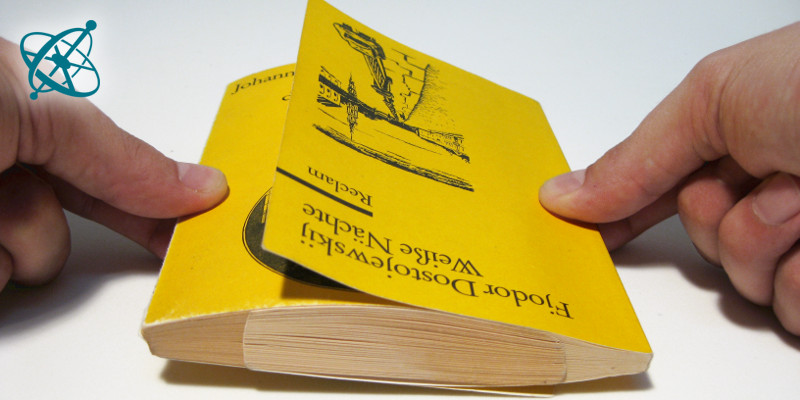Outstanding Webpage - OER In Education Will Enable You To Get There
조회 수 5 추천 수 0 2020.07.16 21:22:51Supporting Practice With Emerging Technologies, by Sandra Schamroth Abrams (2015) As we incorporate brand-new innovations in the class, we need to keep the learning pertinent and meaningful. Here are some considerations and resources to assist you choose. Transitioning to Open Educational Resources, by Andrew Marcinek (2013) Marcinek describes why and how Burlington Public Schools transitioned to Open Educational Resources and talks about 4 OER choices to get begun.
Transitioning to Open Educational Resources, by Andrew Marcinek (2013) Marcinek describes why and how Burlington Public Schools transitioned to Open Educational Resources and talks about 4 OER choices to get begun.
What can teachers use? How can they utilize it? In this compilation, very relevant to the discussion around OER, VideoAmy has actually gathered some enjoyable, engaging videos to assist teachers and students understand the complicated subject. A Guide on Curriculum-Sharing Sites, by Vanessa Vega (2011) Though tips are from 2011, this introduction of useful curriculum-sharing sites is still relevant today.
5-Minute Film Celebration: 10 Sources for Free Lesson Plans, by Amy Erin Borovoy (2013) Exploring totally free lesson preparation resources can be frustrating. Some are incredibly useful, and others not a lot. Here, VideoAmy shares a list of 10 of her favorite lesson preparation tools available, in addition to a playlist of videos to assist instructors use them.
Levinson looks at what's missing out on from MOOCs and the significance of the student-teacher relationship in successful knowing. For more on MOOCs, you might likewise wish to check out Andrew Miller's post, "4 Lessons We Can Gain From the 'Failure' of MOOCs." 5-Minute Film Celebration: 8 Podcasts for Learning, by Amy Erin Borovoy (2015) Intrigued by the world of podcasting? Explore videos, resources, and posts to assist any educator get begun using podcasts in the classroom as a knowing tool.
Open Educational Resources for Educators, by Matt Davis (2013) Davis has authored a range of resource collections, organized around calendar-based topics and other styles. Have a look at some other Edutopia-curated lists, a number of that include open materials, by Davis, VideoAmy, and others: Teaching With Web-Based Resources, by Edwige Simon (2015) Web-based teaching begins with recognizing and vetting your resources, creating a lesson strategy, and establishing online handouts that supply information and encourage student involvement.
6 Open Educational Resources, by Andrew Marcinek (2013) Marcinek provides his 6 favorite open educational resources, introducing a wide world of curriculum materials as alternatives to textbooks, resources for inspiring your students toward innovative expedition and query. Building Your Own Book, by Audrey Watters (2011) Watters looks at the digital possibilities for tailoring and updating texts-- at a fraction of what the paper copy would cost.
Open Learning Goals (Next Generation Learning Challenges, 2016) Power Up! Open Educational Resources: On the Web and Totally free (ASCD's Educational Management, 2014) A 7-Step Guide to Creating Your Own Open Educational Resources (EdSurge, 2014) Open Educational Resources (National Center on Accessible Educational Materials, 2014) Tips for Sharing Excellent Open Educational Content (KQED's MindShift, 2013) The Obstacles to OER (Hack Education, 2012) Developing and Utilizing Open Content (The Regents of the University of Michigan, 2011) Open Educational Resources: Pros and Cons of OERs (University of Maryland University College) 200 Free Kids Educational Resources: Video Lessons, Apps, Books, Sites (Open Culture) Twitter: #OER and #GoOpen.
#GoOpen is a project led by the U.S. Department of Education that encourages states, school districts, and educators to use OER to transform teaching and knowing. The very first associate of #GoOpen individuals consisted of 14 states across the U.S. To discover more about the very first associate and its progress on the #GoOpen commitments here.
OER include any kind of instructional material freely offered AND that is specifically licensed for teachers and trainees to use, adapt, share, and reuse. Examples of OER include finding out material (such as lesson plans, tasks, textbooks, examinations, and videos) in addition to tools for learning (like software application for developing videos and sites, course management systems, word processing programs, and training products).
Trainers can adopt top quality course materials currently prepared by associates. This allows more time for customizing lectures, boosting course materials, and using personalized instruction and feedback to trainees. Traditionally released books are safeguarded by copyright limitations, which prohibit reuse. On the other hand, with OER, students and instructors can make use of material in brand-new contexts, modifications, or derivations, with endless possibilities and models in the future.
This allows more time for customizing lectures, boosting course materials, and using personalized instruction and feedback to trainees. Traditionally released books are safeguarded by copyright limitations, which prohibit reuse. On the other hand, with OER, students and instructors can make use of material in brand-new contexts, modifications, or derivations, with endless possibilities and models in the future.
Trainees keep their products indefinitely, so they will always have access to the course material, if they so select. examine OER quality and use use OER to lower the cost naturally material for trainees place OER on course reserve, in the library brochure, and in the bookstore share OER that you develop from your own course materials supporter for OER with your coworkers the University Shop in Oakland can include info about an OER you use in your course to the bookstore brochure and to the bookshelves, along with print physical copies of OER See the library's OER Guide for lots of details and links for you to check out.
Open Learn offers courses on education and advancement such as "Looking worldwide: the future of education", "Helping with seminar", "Play, learning and the brain", "Enhancing student finding out on museum check outs", and "Using visualisation in mathematics teaching.".
Directory of open resources, includes anatomy, audiology, drugs, proof & guidelines, first help, health education, psychological health, nursing, nutrition, pediatric health, specialized locations, and more. Uses a board of advisers of doctors, researchers, and pharmacists to make sure quality of resources.
Open instructional resources (OER) are revealing signs of settling in initial courses, yet total awareness of alternatives to conventional books continues to lag, a brand-new research study found. Over half (58.1 percent) of the professor surveyed for "Opening the Textbook: Educational Resources in U.S. Higher Education, 2015-16," a report launched today by the Babson Survey Research study Group, said they were not knowledgeable about OER or how instructors can utilize complimentary or low-cost alternatives to conventional books in their courses.
Almost half of all participants (48 percent) stated open products are too hard to discover, which they don't have access to a catalog showing the open resources available to them (45 percent) or a handy coworker who can coach them (30 percent). And while almost 9 out of 10 respondents (87 percent) stated cost to trainees is a crucial or very important element when thinking about which course materials to designate, many faculty members said there aren't adequate high-quality totally free or inexpensive course materials (28 percent) or just enough open resources in their fields in general (49 percent) to make the switch from conventional books.
Additionally, he added, professor are "reluctant to explore the lower-cost or totally free alternatives, or they're unaware of them." This is the first of 3 planned annual reports that will check out how open instructional resources are making their mark on greater education. The research is supported by the William and Flora Hewlett Foundation.





